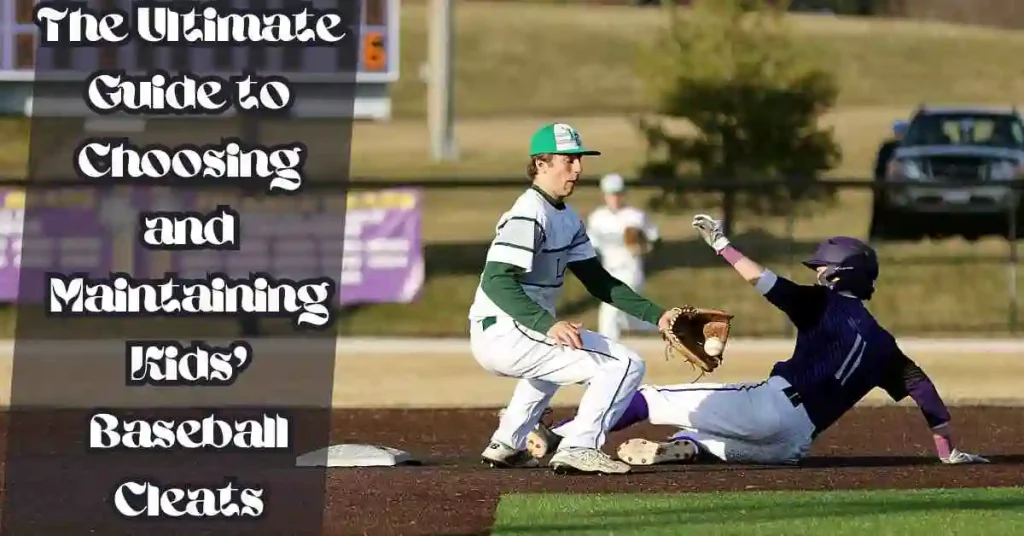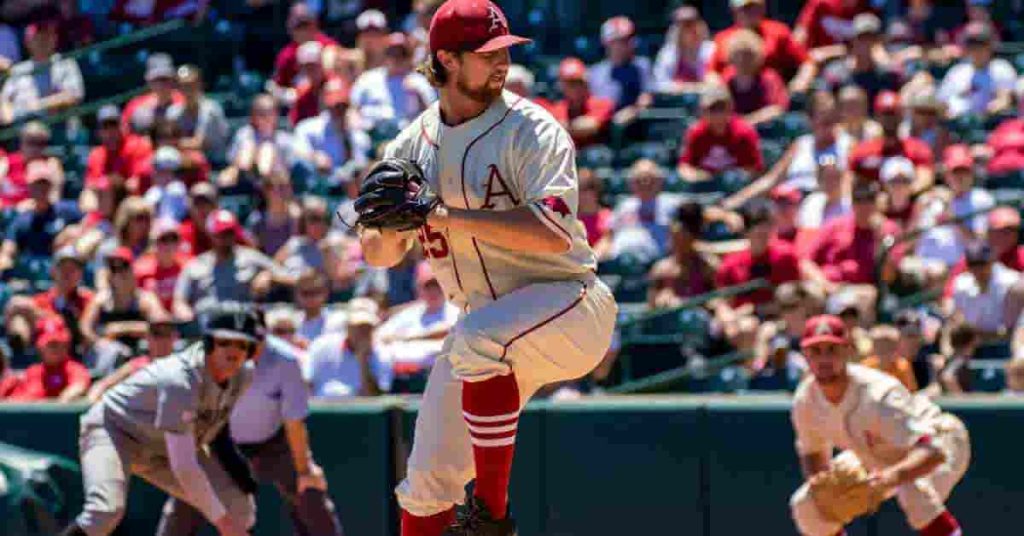
Choosing the appropriate baseball cleats for the next season is essential for both safety and performance. Baseball players who wear the proper cleats are better able to chase down fly balls, round bases quickly, stay balanced in the batter’s box, and pitch with accuracy.
But selecting the ideal pair requires figuring out a lot of rules, different kinds of fields, and individual comfort levels. To make sure your child is prepared to play baseball, this in-depth guide will help you locate the best kids’ baseball cleats. For more tips, check out this guide to choosing the right baseball cleats.
Cleat Regulations For Your League
Choosing the correct baseball cleats starts with knowing the rules of your league.
- The kinds of cleats that are permitted are governed by various laws in each league, primarily for field maintenance and safety concerns.
- For example, competitions supported by the USSA (United States Specialty Sports Association) require molded or plastic cleats to reduce injury risk and field damage, even though many high school leagues allow metal spikes.
- For safety concerns, younger players are typically prohibited from wearing metal spikes, and turf shoes are typically required on artificial turf pitches.
- Typically, baseball cleats are made of synthetic leather for protection and structure, and mesh for breathability. It will be easier to make decisions if you know what your league allows.
Types of Baseball Cleats
Here are different types of baseball cleats:
Molded Cleats
- Molded cleats offer durability and traction by having permanent rubber or plastic studs affixed to the sole.
- Because of their portability, strength, and versatility, they are appropriate for a range of age groups and field types.
- Young athletes also favor molded cleats because they are less expensive and safer than metal alternatives.
Metal Cleats
- On grass and dirt grounds, metal cleats with metal studs connected to the soles provide more traction. They are inappropriate for turf fields, though.
- Though the materials used for the uppers of molded and metal cleats are comparable, metal cleats are typically more expensive and may need care to prevent rust.
- Before making a purchase, it is imperative to confirm if your league permits metal cleats, as many youth leagues prohibit them for security concerns.
Turf Cleats
- Artificial turf fields are the intended use for turf cleats, which are little rubber treads or knobs that provide grip.
- Although they work well on turf, these comfy, light cleats are inappropriate for fields made of grass or mud.
- grass cleats are generally preferred by players who train on grass or indoors, and having a pair in addition to molded cleats can be helpful for a variety of playing situations.
Differences Between Baseball Cleats & Cleats for Other Sports
Here is the difference between baseball cleats and cleats used for other sports:
Baseball Cleats against Soccer Cleats
- Soccer cleats often contain strong plastic studs and are made of a thicker, more flexible leather to withstand direct ball contact.
- Compared to baseball cleats, they are less supportive yet lighter. Soccer cleats are notable for not having a stud at the tip to protect players from injury when they collide.
- On the other hand, baseball cleats have a tip spike for more traction.
Difference between football and baseball cleats:
Here is the difference between football and baseball cleats:
- Football cleats are made of harder plastic or rubber, are intended to withstand collisions, and never have metal studs.
- The majority of football cleats are mid-or high-tops to support the ankle during abrupt movements, while some are low-tops for particular positions.
- Baseball cleats are designed to meet the unique movement requirements of the game. They come in low and high top styles.

How Baseball Cleats Should Fit
For optimal comfort and performance, a proper fit is necessary.
- Baseball cleats that are too little can hurt, and those that are too big can result in blisters.
- For comfortable mobility without slipping, cleats should be just the right amount of snug without being too tight.
- To ensure comfort and prevent foot problems, the ideal distance between the toe and the end of the shoe should be around the width of a finger.
- For a precise fit, it’s best to try on cleats with the socks you plan to wear to games because baseball socks are thicker.
Low-Top vs. Mid- and High-Top Cleats
Baseball cleats can be classified as either high-top or low-top depending on whether you prefer ankle support or speed.
- Low-top cleats are lighter and encourage speed and agility, while high-top cleats provide better ankle support, which is important to avoid injuries when running or sliding.
- Whether you choose high- or mid-top cleats, make sure the ankle collar fits snugly to give the support you need without impeding your range of motion.
Cleats by Position
Here are types of cleats based on the players position in the game:
Cleats for Outfielders
- For improved traction, outfielders frequently use metal cleats since they are less likely to gather clumps of grass and mud.
- Prior to buying, always confirm the league’s rules regarding metal cleats.
Cleats for Infielders
- Most infields can get by with molded cleats, but badly kept fields might need the added traction that metal cleats offer.
- Once more, find out if metal cleats are permitted from your league.
Cleats for Pitchers
- Low-top cleats help pitchers because they assist the exact footwork needed to pitch.
Cleats for Catchers
- Catchers usually prefer high-top styles for more ankle support and metal studs for improved traction.
How to Clean Baseball Cleats
Cleaning is a necessary part of maintaining baseball cleats to guarantee longevity and performance.
- First, use a soft brush or cloth to scrape the surface to remove any dirt or debris, or tap the cleats together.
- To make a cleaning solution, use mild detergent or soap with warm water.
- Concentrating on the soiled spots, carefully scrub the cleats with a cloth or brush with soft bristles.
- Avoid direct sunshine or heat and properly rinse with water before letting it air dry.
- Steer clear of abrasive equipment and harsh chemicals since they can harm the cleats.
- Your baseball cleats will continue to function at their peak for longer with regular cleaning and care.
Conclusion
Selecting the appropriate baseball cleats is crucial to guaranteeing maximum efficiency, ease of use, and security while playing. You may make an informed choice that will help your young athlete all season long by being aware of league rules, the various cleat types available, how to get the ideal fit, and the demands of each playing position. By maintaining your cleats well, including through regular cleaning, Your baseball cleats will continue to be in excellent condition with regular upkeep and cleaning, giving you the greatest traction and support during every practice and game.
FAQ’S
1-Can I wear football or soccer cleats for baseball?
A: Since football and soccer cleats are made differently to support the unique movements of their respective games, it is not advised.
2-How often should I clean my baseball cleats?
A: It’s best to clean regularly after every practice or game to preserve longevity and performance.
3-Are young players safe to use metal cleats?
A lot of youth leagues prohibit metal cleats because of safety issues. Always confirm the rules with your league before making a purchase.
4-How can I make sure my baseball cleats fit me the best?
A pinky’s width should separate the toe of the shoe from the end of the shoe while trying on cleats with baseball socks for maximum comfort.
5-What kind of cleats do I need to select for fields with artificial turf?
A: The best cleats for artificial turf pitches are those with tiny rubber treads or knobs.
